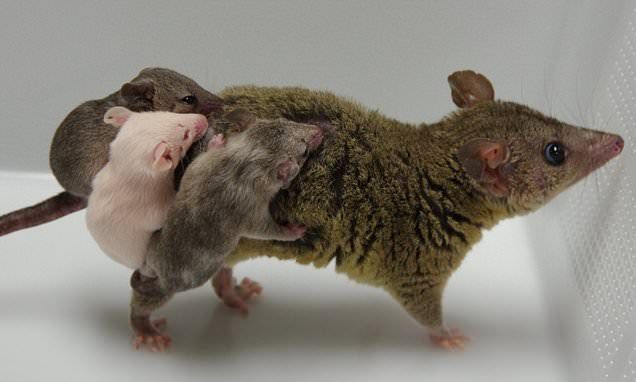Jul 30, 2021
Scientists create the world’s first genetically engineered marsupial
Posted by Shailesh Prasad in category: genetics
Disrupting a gene responsible for pigments allowed experts in Kobe, Japan to create albino opossum offspring.

Disrupting a gene responsible for pigments allowed experts in Kobe, Japan to create albino opossum offspring.
Boeing needs to show that its spaceship is safe for astronauts after failing its last test flight. But Russia’s spacecraft glitch delayed the launch.

Institute of Neurological Recovery 1877 S. Federal Hwy. Suite 110 Boca Raton, FL 33432 Phone: +1 (561) 353‑9707.
The Institute of Neurological Recovery® (INR®). A decade of pioneering discoveries in medicine. The INR utilizes the pioneering, patented perispinal etanercept (PSE) off-label treatment methods invented by its founder and Medical Director, Edward Tobinick, M.D. The contents of this website, including text, images, and videos are ©2021 INR PLLC, all rights reserved.
While advanced artificial intelligence learning models can do complicated functions, we have yet to teach AI common sense.
At this point i think the US government is going to get stuck paying to develop human level robotic hands.
Over the past few decades, roboticists and computer scientists have developed a variety of data-based techniques for teaching robots how to complete different tasks. To achieve satisfactory results, however, these techniques should be trained on reliable and large datasets, preferably labeled with information related to the task they are learning to complete.
For instance, when trying to teach robots to complete tasks that involve the manipulation of objects, these techniques could be trained on videos of humans manipulating objects, which should ideally include information about the types of grasps they are using. This allows the robots to easily identify the strategies they should employ to grasp or manipulate specific objects.
Continue reading “A new taxonomy to characterize human grasp types in videos” »
ABB said Thursday it would deliver an integrated electric propulsion system and vessel control technology for Crowley’s pioneering eWolf tug, built for sustainable and safe operations at the Port of San Diego.
Upon delivery by Alabama-based shipbuilder Master Boat Builders, Inc. (MBB) in mid-2023, Crowley Maritime Corporation’s new 82-foot (25-meter) vessel will support ship arrivals and departures at the Port of San Diego in California.
It will be the first all-electric, battery-powered harbor tug ever built and operated in the United States and only the third of its kind to enter operations worldwide, ABB said.
Scientists have found two huge, red objects in the asteroid belt that they believe are not supposed to be there – both of which have “complex organic matter” on their surfaces.
These two asteroids, called 203 Pompeja and 269 Justitia, were discovered by Jaxa, the Japan Aerospace Exploration Agency. Pompeja is approximately 110 kilometres wide, while the smaller Justitia has a diameter of only 55 kilometres.
Found in the cluster of rocks between Mars and Jupiter, these two objects are distinctly different from their neighbours. Both Pompeja and Justitia reflect more red light than other surrounding asteroids due to the increased presence of complex organic material on their surface – such as carbon or methane.
Researchers at the University of Sydney and quantum control startup Q-CTRL today announced a way to identify sources of error in quantum computers through machine learning, providing hardware developers the ability to pinpoint performance degradation with unprecedented accuracy and accelerate paths to useful quantum computers.
A joint scientific paper detailing the research, titled “Quantum Oscillator Noise Spectroscopy via Displaced Cat States,” has been published in the Physical Review Letters, the world’s premier physical science research journal and flagship publication of the American Physical Society (APS Physics).
Focused on reducing errors caused by environmental “noise”—the Achilles’ heel of quantum computing —the University of Sydney team developed a technique to detect the tiniest deviations from the precise conditions needed to execute quantum algorithms using trapped ion and superconducting quantum computing hardware. These are the core technologies used by world-leading industrial quantum computing efforts at IBM, Google, Honeywell, IonQ, and others.
When molecules are excited, they can give rise to a variety of energy conversion phenomena, such as light emission and photoelectric or photochemical conversion. To unlock new energy conversion functions in organic materials, researchers should be able to understand the nature of a material’s excited state and control it.
So far, many scientists have used spectroscopy techniques based on laser light in research focusing on excited states. Nonetheless, they were unable to use laser light to examine nanoscale materials, due to its limitations in so-called diffraction. The spectroscopic measurement methods applied to electron and scanning probe microscopes that can observe substances with atomic resolutions, on the other hand, are still underdeveloped.
Researchers at RIKEN, the Japan Science and Technology Agency (JST), University of Tokyo and other Institutes in Japan have recently developed a laser nanospectroscopy technique that could be used to examine individual molecules. This technique, presented in a paper published in Science, could open up new possibilities for the development of various new technologies, including light-emitting diodes (LEDs), photovoltaics and photosynthetic cells.
The CHEOPS satellite accidentally spotted a rare exoplanet with no known equivalent. The satellite detected this unique exoplanet while looking for two exoplanets in a bright nearby star system.
This planet called ‘Nu2 Lupi d’ is located 50 light-years away in the constellation Lupus (Latin for Wolf), around a star called Nu2 Lupi. It is about 2.5 times the size of Earth and almost 9 times its mass.
What’s more, scientists used measurements with archival data from other observatories and numerical models to characterize the density and composition of the planet and its neighbors. They found that the planet has a rocky interior. It has far more water than the Earth. However, the water is not liquid; instead of taking high-pressure ice or high-temperature steam, making the planets uninhabitable.
